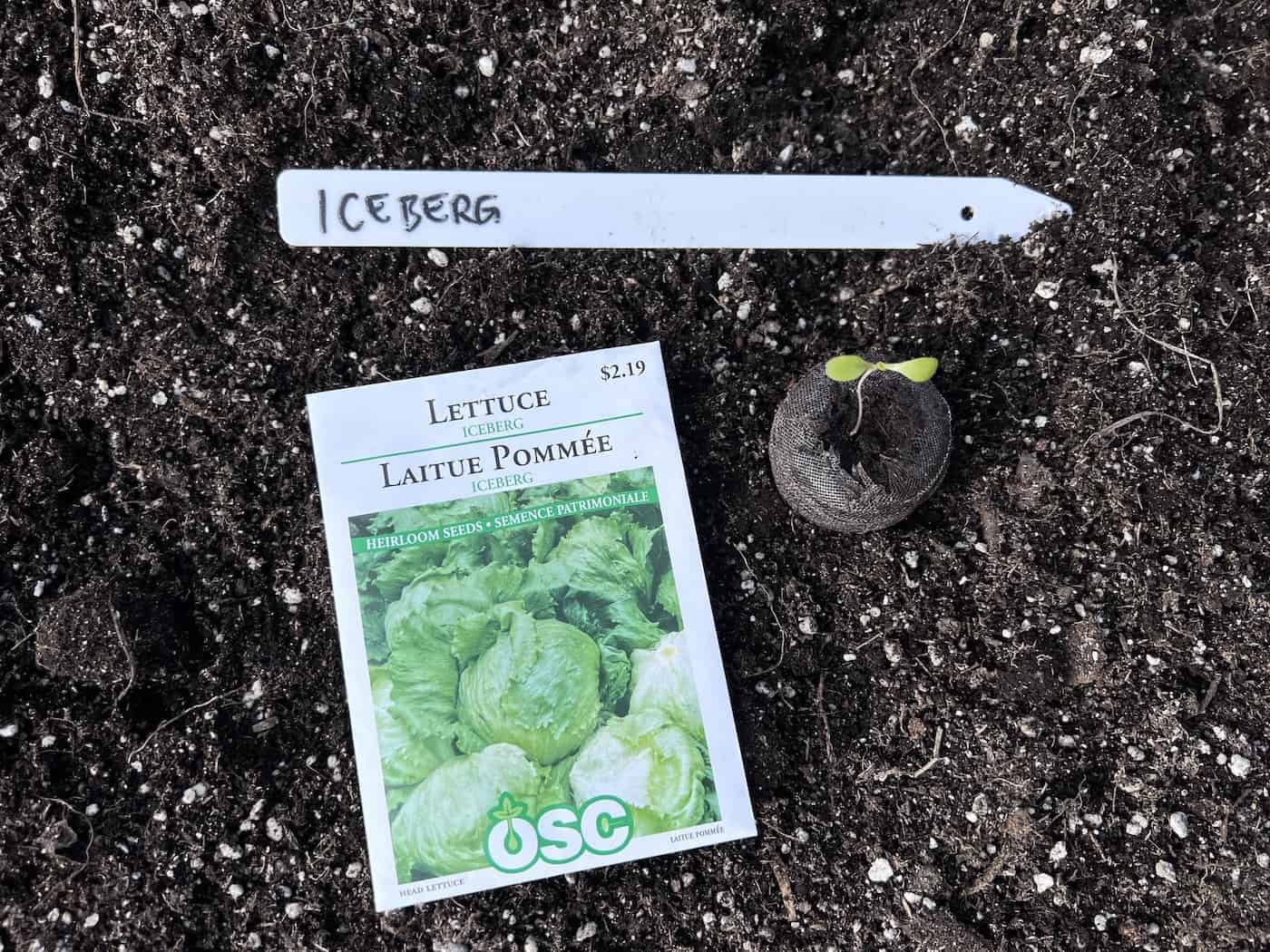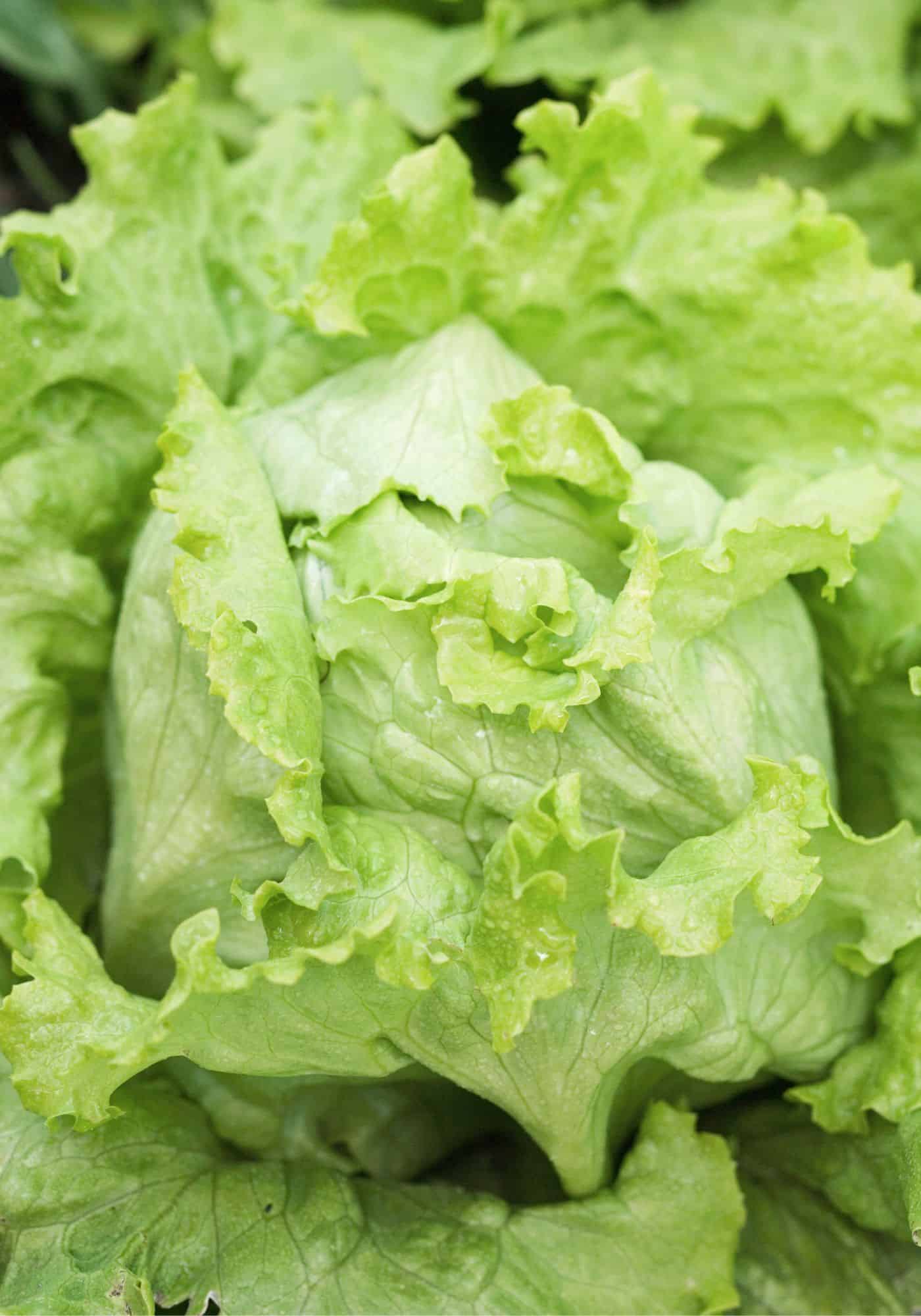One of the most widely used lettuce varieties around the world (and certainly in my kitchen), iceberg lettuce is a must-have in your vegetable garden. This variety, renowned for its crunchy texture and refreshing taste, is as easy to grow as it is to eat.
Iceberg lettuce is a popular crisphead variety of lettuce. It grows best in cooler temperatures, planted in rich and well-draining soil with a slightly acidic pH. The plants require a full day of direct sun, but can benefit from some afternoon shade when temperatures are high. The heads should form in about two and a half months, ready to harvest when the outer leaves turn pale green.

Introduction to iceberg lettuce
Iceberg is a beloved variety of lettuce (Lactuca sativa) belonging to the Asteraceae family. You may be surprised to find this particular family also contains popular plants like sunflowers and daisies, making them all close relatives.
Previously known only as crisphead lettuce, iceberg lettuce has an interesting backstory to its name. In the early 20th century, transporting these lettuce heads across the United States involved packing them with heaps of ice in train cars due to the lack of refrigeration. The name stuck and has been used since to describe this popular variety.

Where does iceberg lettuce grow best?
Iceberg lettuce has a preference for cooler climes and doesn’t grow well in hot weather. It is an ideal candidate for any USDA Zone during the more temperate parts of the year when grown as an annual.
It grows well in beds or containers and makes a great low-growing companion for other plants in the vegetable garden.
Light
Like other lettuce varieties, iceberg lettuce needs full sun to develop large leaves and a full head. However, it can also tolerate some partial shade in the hot afternoons, depending on your region. Aim for exposure to at least six hours of direct sunlight daily for optimal growth.
If your region tends to be excessively hot, especially if you’re growing in the peak of summer, some shade from the afternoon sun can shield the plant from overheating and premature bolting.
Look for an east-facing area of your garden that has full early morning exposure and some partial shade in the afternoons.
Temperature
Iceberg lettuce far prefers cooler temperatures to high heat. Anything above 70F may trigger the plant to bolt, which causes the leaves to become bitter. They love cold so much that they can withstand a little frost, even enhancing the lettuce’s sweetness.
Soil
Rich and slightly acidic soil is ideal for a thriving lettuce plant. They need soil to drain well but to also hold onto enough moisture to supply the juicy leaves.
If your soil is on the sandy side, amend with some additional organic matter like homemade compost to improve conditions. The better the soil you start with, the better your lettuce head will grow.

How to care for iceberg lettuce
Once you’ve got your lettuce seedling in the ground (or in its container), there are a few essentials to boost growth and deliver the most flavorful leaves possible.
While lettuce isn’t hard to grow when compared to other veggies, it does have particular requirements that need to be monitored throughout the season.
Water
To develop its characteristic tender, crisp leaves, regular watering is one of the most important parts of your lettuce care routine.
They don’t require much more water than the rest of your garden (around an inch per week), whether through rainfall or manual watering. However, they don’t like to dry out too much, especially when young.
Despite this need for moisture, it’s important not to overwater to prevent rot – a greater risk if your soil is dense.
Fertilizer
The initial enrichment of the soil with compost should supply plenty of nutrients for your iceberg lettuce’s growth. But if you want to give the plants an extra boost, you can supplement with a balanced slow-release fertilizer soon after planting.
Alternatively, a diluted liquid fertilizer can be applied every few weeks, depending on concentration. Look for organic fertilizers – iceberg lettuce responds particularly well to seaweed fertilizers.
Maintenance
Regular garden maintenance for your young lettuce involves a close eye on potential weed growth, as lettuce does not like to compete for nutrients. Also keep an eye on the weather to watch for potential heatwaves, which are becoming more and more frequent. Consider providing some shade for your lettuce plants to prevent them from bolting if temperatures increase suddenly.
Pests
Iceberg lettuce is a tasty target for several insects. These include aphids, slugs, and cutworms, among others.
Aphids, small sap-sucking insects, can be controlled with insecticidal soap. You can also try introducing natural predators like ladybugs or encouraging them to your garden with companion plants.
Slugs and snails are night feeders that have demolished many of my lettuce heads. To protect your plants, especially when they are young and most at risk, try beer traps or snail baits that are non-toxic to pets and humans.
Cutworms are caterpillars that do serious damage in the vegetable garden, particularly when it comes to lettuce. A collar around the base and regular checking for pests can help control these damaging bugs in your backyard.

Harvesting iceberg lettuce
Generally, iceberg lettuce matures and is ready for harvest around 75 days after planting. Harvest when the head forms and the outer leaves are a pale green color. You want to get to it before any of the leaves brown or the plant starts to flower.
To harvest, simply cut the entire head off at the base. Harvest in the cool hours of the morning when the leaves are at their crispest and most refreshing before storing to enjoy in your salads and sandwiches.







